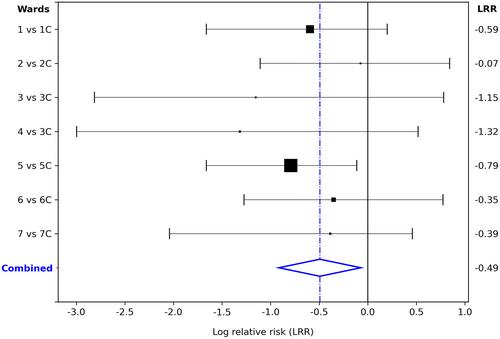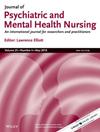RETRACTED: Reduced self-harm on acute mental health wards following the implementation of a vision-based patient monitoring system: Evidence from five NHS trusts
Abstract
What is known on the subject?
- Inpatient mental health settings pose unique challenges for patient safety, in part because psychiatric disorders are well-known risk factors for self-harm and suicide.
- Ward staff follow protocols to try and keep patients safe including carrying out in-person safety checks, usually every 15 min, but patients unfortunately still find opportunities to harm themselves.
- A vision-based patient monitoring system (VBPMS) is a contact-free technology that can help mental health nurses to monitor patients in hospital more effectively. For example, the tool alerts staff to situations where a patient might need assistance, like when they spend a long period of time in their ensuite bathroom.
- Research has shown that the VBPMS can support staff to prevent safety incidents from occurring and a recent study found a decrease in self-harm after the tool was implemented at one NHS mental health trust.
What does the paper add to existing knowledge?
This paper presents data from five NHS mental health trusts and suggests that the VBPMS can consistently help staff to prevent self-harm on acute mental health wards.
What are the implications for practice?
- Managing self-harm behaviours is a challenge for mental health nursing staff. Standard safety protocols are not effective enough – staff need new ways to monitor patients.
- In general hospitals, technology is used every day to support care. This research shows that the VBPMS can be used to improve patient safety in mental health hospitals.
4.1 Introduction
Self-harm is sadly relatively common in mental health inpatient settings, and the effectiveness and appropriateness of strategies used to prevent it have long been disputed. The use of vision-based patient monitoring systems (VBPMS) has been shown to improve various safety outcomes. Their potential to support staff in preventing inpatient self-harm warrants further exploration.
4.2 Aim
This research investigated whether implementing a VBPMS—as an adjunct to existing clinical practice—within acute inpatient services at five NHS England mental health trusts led to reductions in self-harm.
4.3 Method
Five quasi-experimental studies assessed the number of bedroom self-harm incidents, across 12 adult wards, before and 5–12 months after a VBPMS was deployed. Percentage changes were calculated. Four studies used control groups and were included in a fixed-effect meta-analysis.
4.4 Results
In the meta-analysis, a significant inverse-weighted average relative risk percentage change of −38.9% was recorded. For the study with no control groups, reductions in self-harm were seen across all wards (range: −9.1% to −29.8%).
4.5 Discussion
This research demonstrates that VBPMS can support clinicians to create safer ward environments by preventing incidents of self-harm from occurring.
4.6 Implications for Practice
The results provide preliminary support for wider rollout of the technology on acute mental health wards.


 求助内容:
求助内容: 应助结果提醒方式:
应助结果提醒方式:


